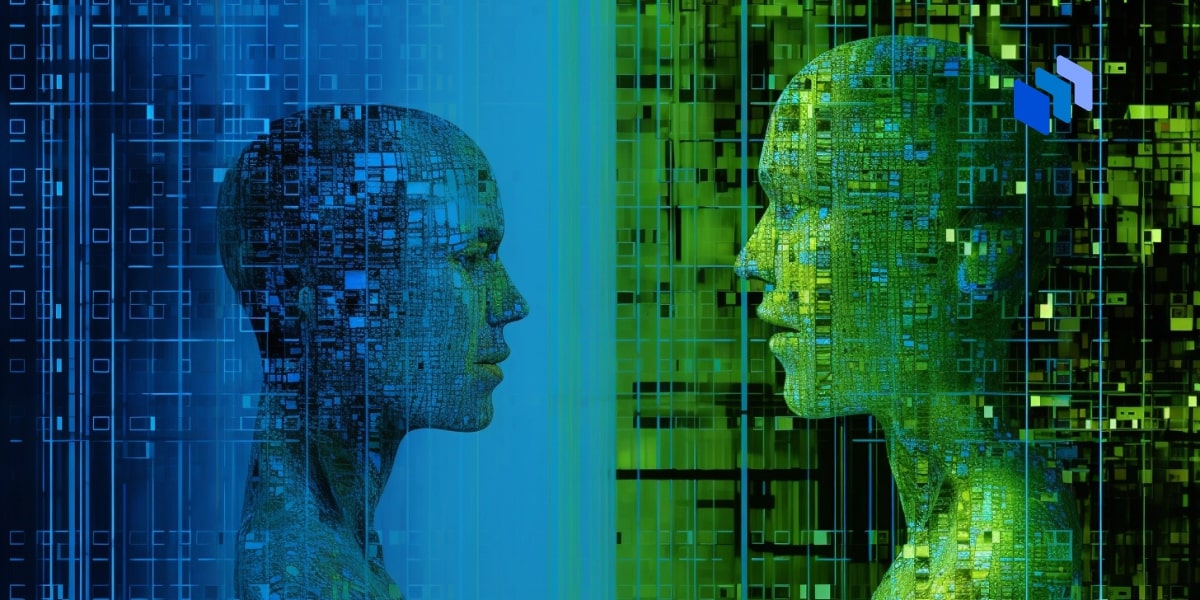In the realm of technology, the timeless clash between open source and proprietary models is witnessing a new battlefield with generative AI.
As businesses are actively exploring generative AI solutions, with a significant 19% of companies already in the pilot or production stages, it has become pivotal to choose between open-source and proprietary models.
In this article, we delve into these models, exploring their merits and demerits.
The Ongoing Debate: Open Source vs. Proprietary Models
The debate between open-source and proprietary development models is not new; it has been a cornerstone of the software industry for decades. It originated in the early 1980s when Richard Stallman initiated the GNU General Public License (GPL) movement to counter the rising dominance of proprietary software.
This movement gained momentum with the release of the Linux kernel in 1991, offering an alternative to the proprietary Unix operating system.
Today, this competition has evolved and expanded, spanning various software categories such as web browsers, productivity applications, databases, web servers, cloud computing services, mobile operating systems, and development tools.
The choice between open-source and proprietary software depends on individual needs, goals, and preferences.
Proprietary software often provides specialized features, dedicated support, and seamless integration with other products from the same vendor. In contrast, open-source models offer accessibility, customization, transparency, and the power of crowdsourced development.
Many argue that open source excels in the marketplace due to these benefits.
The New Frontier: Generative AI
Open-source vs proprietary software now has a new battlefront: generative AI.
While it might seem like a conventional battle, a fundamental difference sets it apart. Unlike the open-source movement, where resources like investment, brainpower, and effort can be crowdsourced, generative AI demands substantial data and energy.
Both resources are becoming increasingly expensive and, for the most part, out of reach for open-source contributors.
As a result, creating an open-source generative AI model is not entirely cost-free. It may involve expenses for data labeling and infrastructure costs for training the AI models.
However, it’s important to note that this investment is significantly more cost-effective in the long run when compared to proprietary generative AI, which typically involves licensing fees.
Transparency plays a vital role in the context of open-source generative AI models, especially given the black-box nature of these AI systems, particularly when they are used in critical applications.
Furthermore, optimizing an open-source generative AI efficiently can reduce latency and enhance performance. Moreover, having the source code in-house gives organizations complete control over their data, ensuring that sensitive information remains within their network and mitigating the risk of data breaches or unauthorized access.
Additionally, pre-trained open-source generative AI models can be fine-tuned to align with an organization’s specific requirements, and the AI can also be trained on specific datasets. In contrast, making these changes or specifications on a proprietary generative AI often entails working with a vendor, incurring both time and financial expenses.
In contrast to open-source, proprietary generative AI offers a level of reliability that stems from dedicated development and maintenance by a specialized team of experts. These models are not the result of haphazard community contributions but are meticulously crafted and fine-tuned by a select group of individuals with a profound understanding of AI intricacies.
Moreover, organizations that opt for proprietary generative AI benefit from tailored support and specialized knowledge. This is complemented by the presence of service level agreements (SLAs) and technical assistance, offering a reassuring layer of security, especially for mission-critical operations.
The ease of integration into existing infrastructure and rigorous quality control measures render proprietary AI solutions ideal for businesses of any scale. In essence, proprietary generative AI presents a dependable and fully supported solution to businesses.
Generative AI Landscape: Open-source vs. Proprietary AI Models
In the world of open-source generative AI, Meta’s LLaMa2 is a standout language model known for its adaptability and versatility.
This model, which boasts an impressive range of parameters from 7 to 70 billion, can be readily accessed through platforms like Watsonx.ai and Hugging Face. BigScience’s Bloom, on the other hand, is a multilingual model that was developed transparently by a vast AI research community, emphasizing the importance of openness and collaboration in the field.
The Technology Innovation Institute’s Falcon LLM is a notable contender that offers remarkable problem-solving capabilities while consuming fewer resources.
Additionally, fine-tuned models like Vicuna and Alpaca, which are based on the LLaMa architecture, have managed to deliver performance levels that are on par with GPT-4.
Open-source generative AI models have found widespread application across diverse sectors. IBM and NASA’s collaboration resulted in the development of an open-source Language Model (LLM) trained on geospatial data, contributing to climate change-related initiatives.
Healthcare organizations have been leveraging open-source generative AI for applications spanning diagnostics, treatment optimization, patient data management, and public health initiatives. The financial sector has also embraced its own dedicated open-source LLM, FinGPT, for various financial applications.
In the world of proprietary generative AI, industry giants like OpenAI and Google are setting the pace. OpenAI’s GPT-4, with approximately 1.8 trillion parameters, demonstrates exceptional problem-solving abilities and content generation. Google’s Bart, with 137 billion parameters, interprets and responds to human queries swiftly and accurately.
These proprietary generative AI tools find applications across diverse organizations. Duolingo introduced Duolino Max, incorporating GPT-4’s natural language processing. Khan Academy‘s Khanmigo is a GPT-4-powered AI chat tool, and Microsoft’s Bing Chat service leverages GPT-4 to enhance search and conduct natural-language conversations.
The Dilemma: Open Source vs. Proprietary Generative AI
The debate surrounding open-sourcing generative AI models has increased, especially considering a recent incident where researchers asked a proprietary generative AI system called MegaSyn to create toxic molecules, resulting in some resembling known nerve agents.
This raises a burning issue: opponents of open-sourcing generative AI believe that it should be locked up to prevent misuse, while proponents of open-source argue that proprietary models concentrate too much power in the hands of a select few.
The Bottom Line
Generative AI is transforming industries, but choosing between open-source and proprietary models is crucial. Open-source champions customization and transparency, while proprietary offers reliability and support.
Open-source generative AI demands resources but provides control and cost-efficiency. Proprietary models boast specialized expertise and security.








